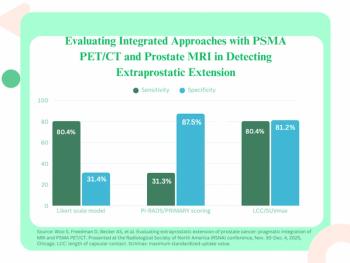
MRI Shows Heart Damage in Some Children After Chemo
MR images detect heart damage in childhood cancer survivors who were treated with anthracycline-based regimens.
MR images have shown early tissue markers of ventricular remodeling among childhood cancer survivors who were treated with anthracyclines, say researchers in a study published in the
Researchers and physicians have long been aware of the cardiotoxic effects of antineoplastics such as anthracyclines and how these effects can influence the morbidity and mortality among childhood cancer survivors. However, heart damage may not always be noticeable in the early stages, when preventative therapy may be possible.
Researchers from the University of Alberta in Canada performed cardiovascular MR scans (CMR) on 30 childhood cancer survivors to examine the relationship between cardiac structure, function and tissue characteristics with chemotherapy doses and the exercise capacity of children who were treated with anthracyclines.
Thirty children, aged 7 to 19, were in at least two years’ remission following anthracycline treatment. They underwent CMR, echocardiography, and cardiopulmonary exercise testing for peak oxygen consumption (VO2). The researchers noted ventricular function, mass, T1 and T2 values, and myocardial extracellular volume fraction (ECV), which measures diffuse fibrosis based on changes in myocardial T1 values pre- and post-gadolinium. The children’s cardiac function was also assessed with conventional and speckle tracking echocardiography.
The researchers found that the CMR images did detect some changes in heart muscle related to the formation of fibrosis - even among children whose heart function had been judged as normal when viewed by ultrasound.
Patients had normal left ventricular ejection fraction, but their peak VO2 was 17 percent lower than age-predicted normal values. This was also correlated with the anthracycline doses.
“In childhood cancer survivors, MRI changes were related to anthracycline dose given to children,” lead authors Edythe Tham and Richard Thomson, MD, said in a release. “These changes are also mirrored by thinning of the heart wall and a reduction in the exercise capacity.”
More research is required, but the authors said they hope that by detecting heart changes early after treatment with chemotherapy, treatment may delay any heart damage that may result.
Newsletter
Stay at the forefront of radiology with the Diagnostic Imaging newsletter, delivering the latest news, clinical insights, and imaging advancements for today’s radiologists.



























